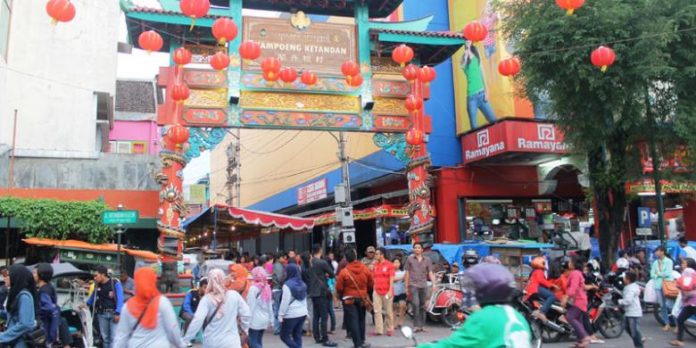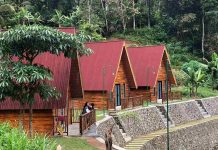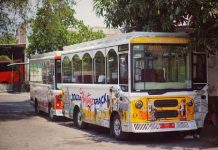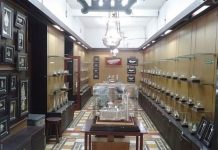Talking about the ethnic of Tionghoa in Jogja, we couldn’t miss the name of this village, Kampung Ketandan. Ketandan is the name of the village located in Gondomanan, Malioboro, precisely in the northern part of Beringharjo market. Thus far, Ketandan still becomes the one of commerce center in Yogyakarta. Other than becoming the commerce center, Ketandan has also a unique history of Tionghoa ethnic in Yogyakarta.
The history of the existence of Ketandan village was derived by the occupation of Tionghoa ethnic as the one of the economic drivers in Jogja. This Tionghoa ethnic has been recognized in Yogyakarta since the government era of Sultan Hamengkubuwono VII, in 19th century A.D by establishing Tionghoa residence in Ketandan which become the center of the Chinese occupation in Dutch colonization.
The name of Ketandan was derived from the word “Tondo” which means a tax collector or called as “Pejabat Tondo” for a Chinese who got directly the authority from Sultan to collect the tax. That means that the ethnic Chinese had an important role in developing the history and the culture of Yogyakarta.
Architecturally, some of Ketandan village building has changed. Even so, some of ancient building of Chinese, European, and Javanese architectural assimilation can be found here. One of the typical characteristic of the ancient house of Tionghoa people is its roof shape.
The ancient Chinese roofs are most curved upward. That’s absolutely not the same with Javanese traditional architecture or even modern houses style. Usually, the front part of the Chinese houses building is being used as a store building and the back of the house is used as a living place.
Thus far, we can still see many Tionghoa ethnic people in Ketandan. Usually they work as a merchant. The majority of their business is selling the gold and jewel. But a long time ago, many Tionghoa people made a business of grocery store and traditional drug store. But since 1950, almost 90% of their society switched their business into gold and jewelry commerce.




